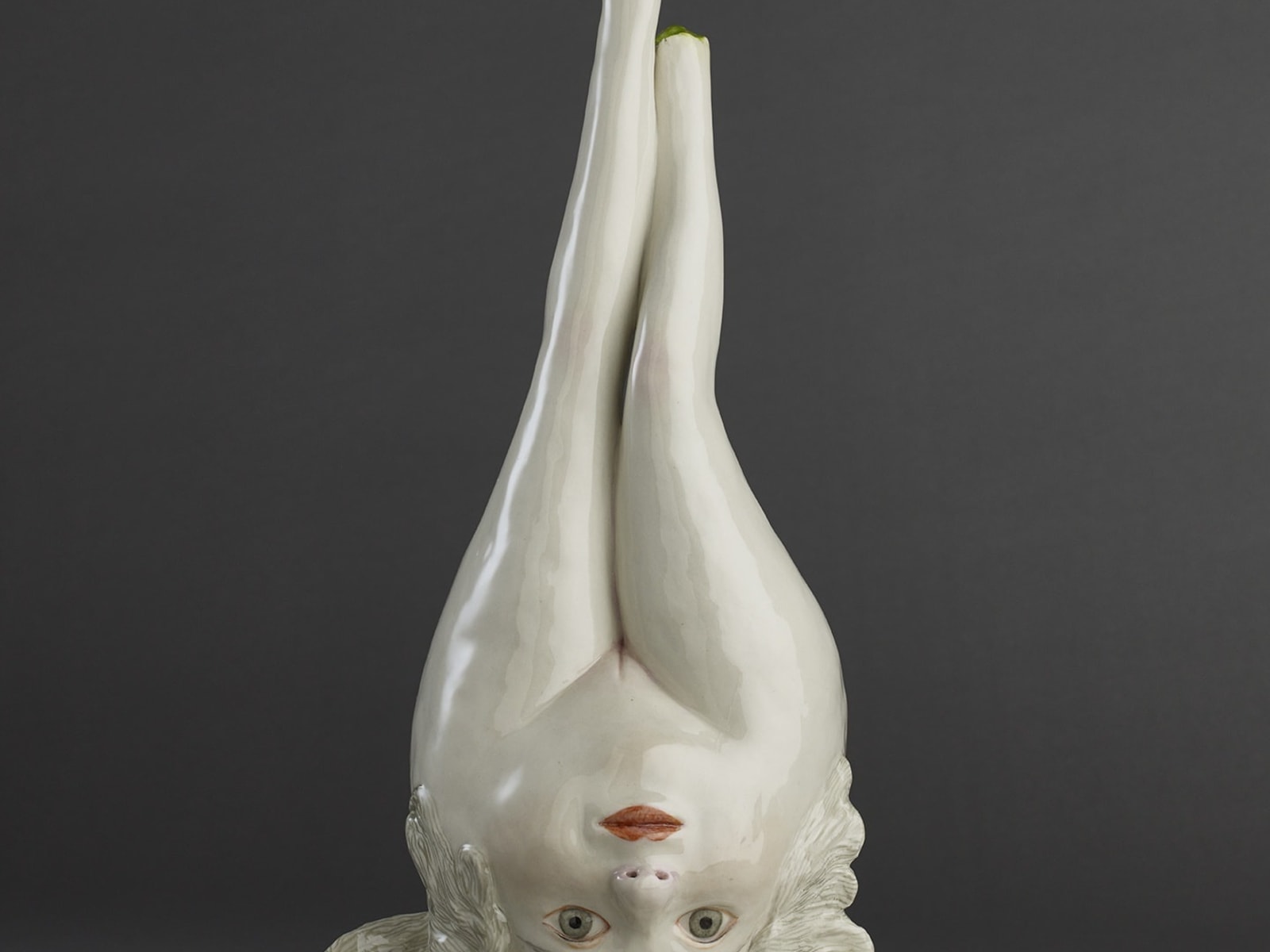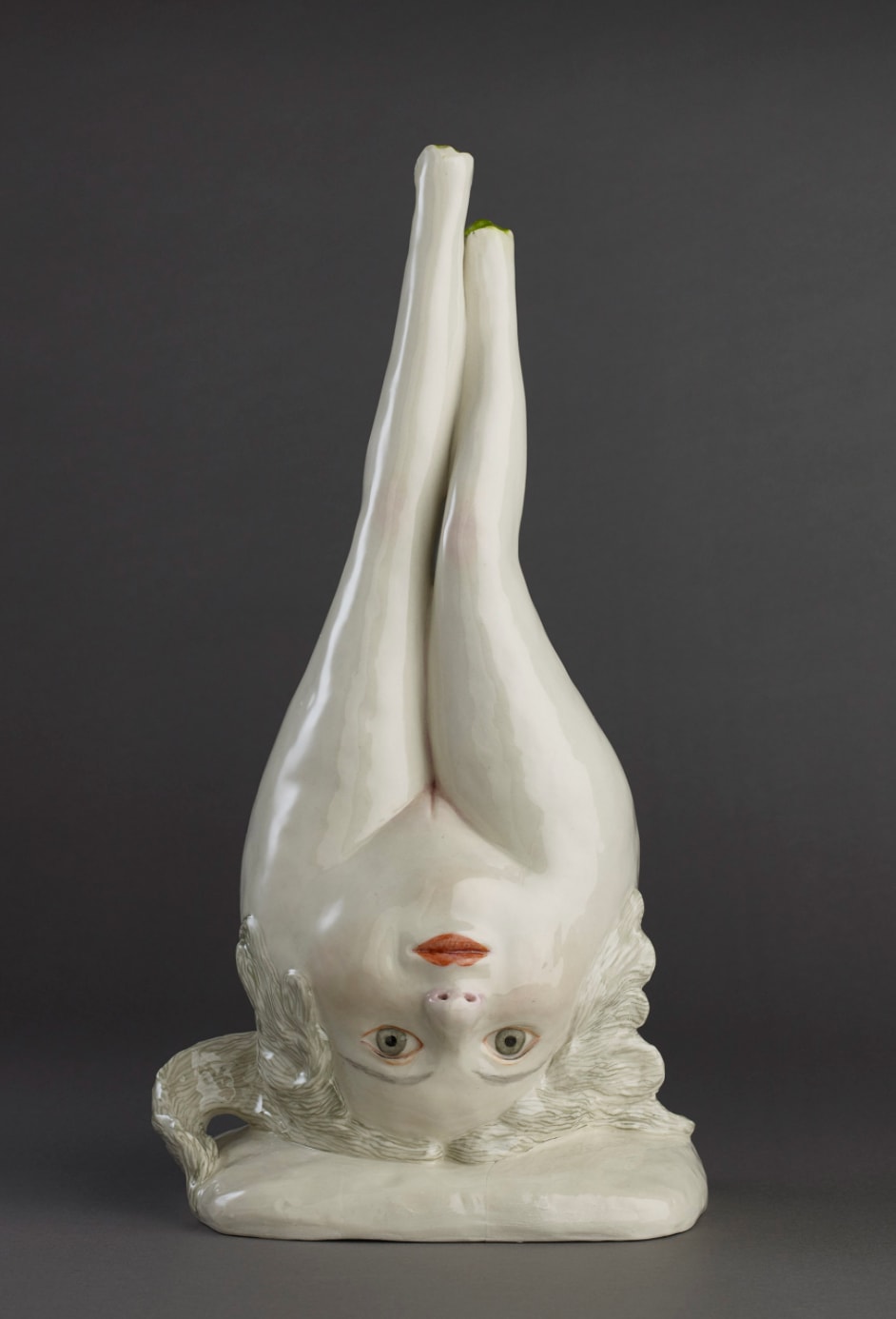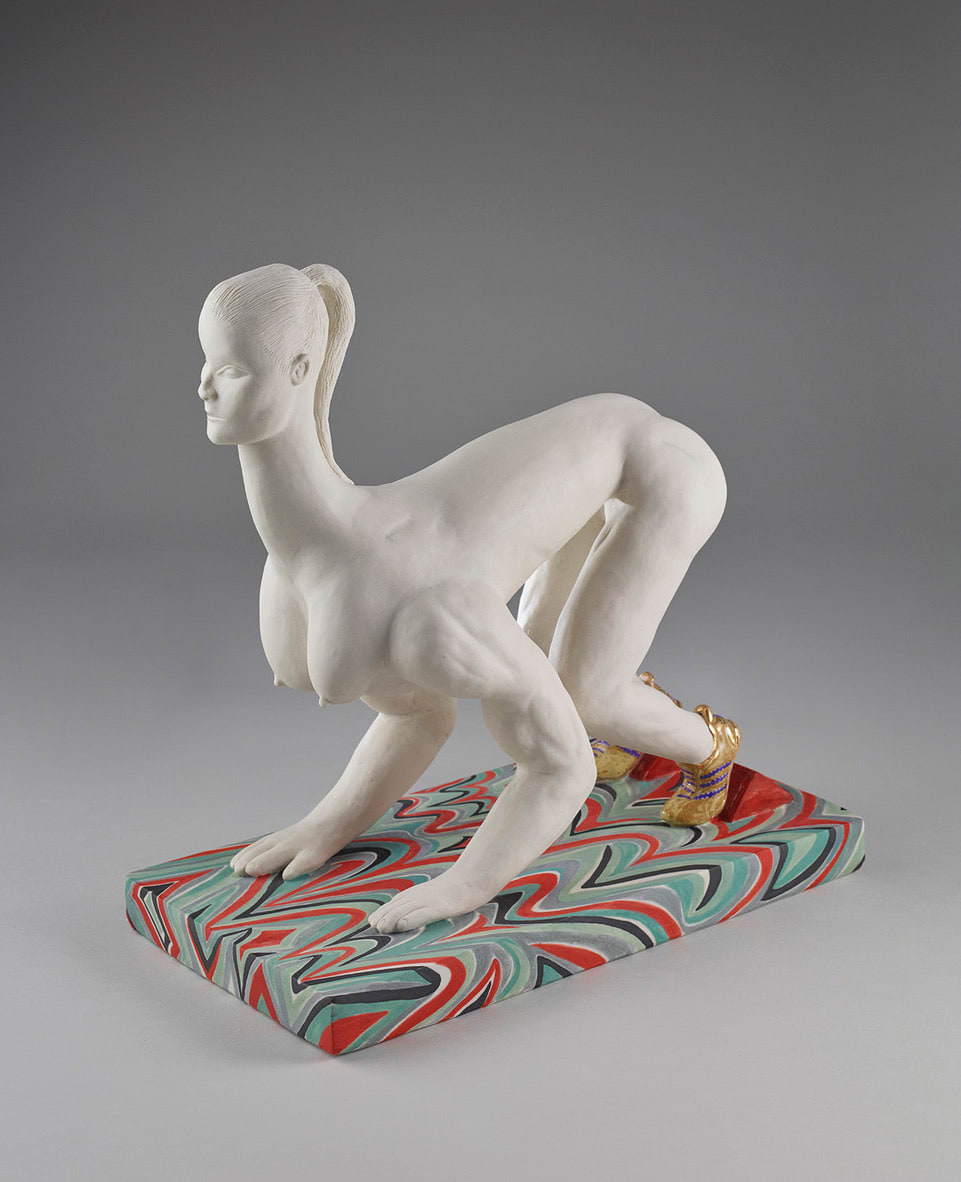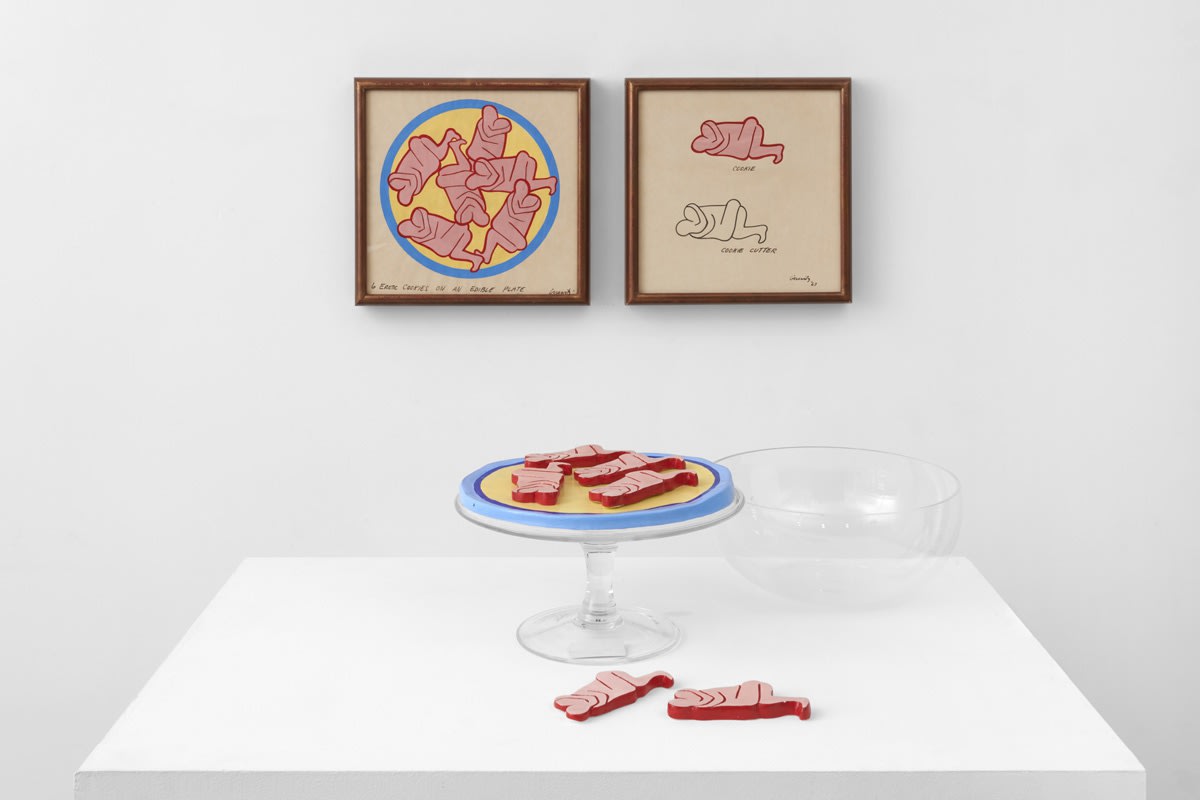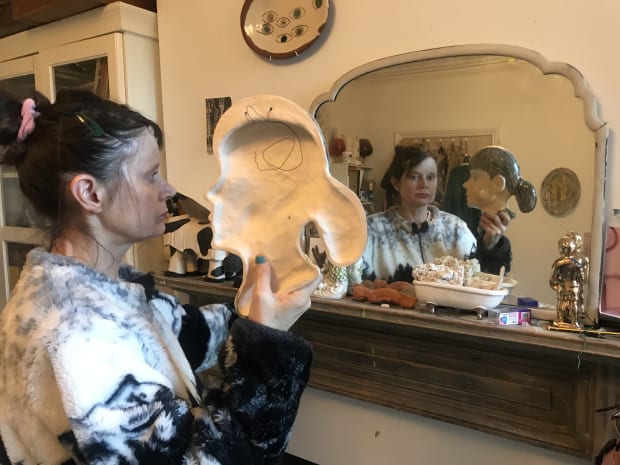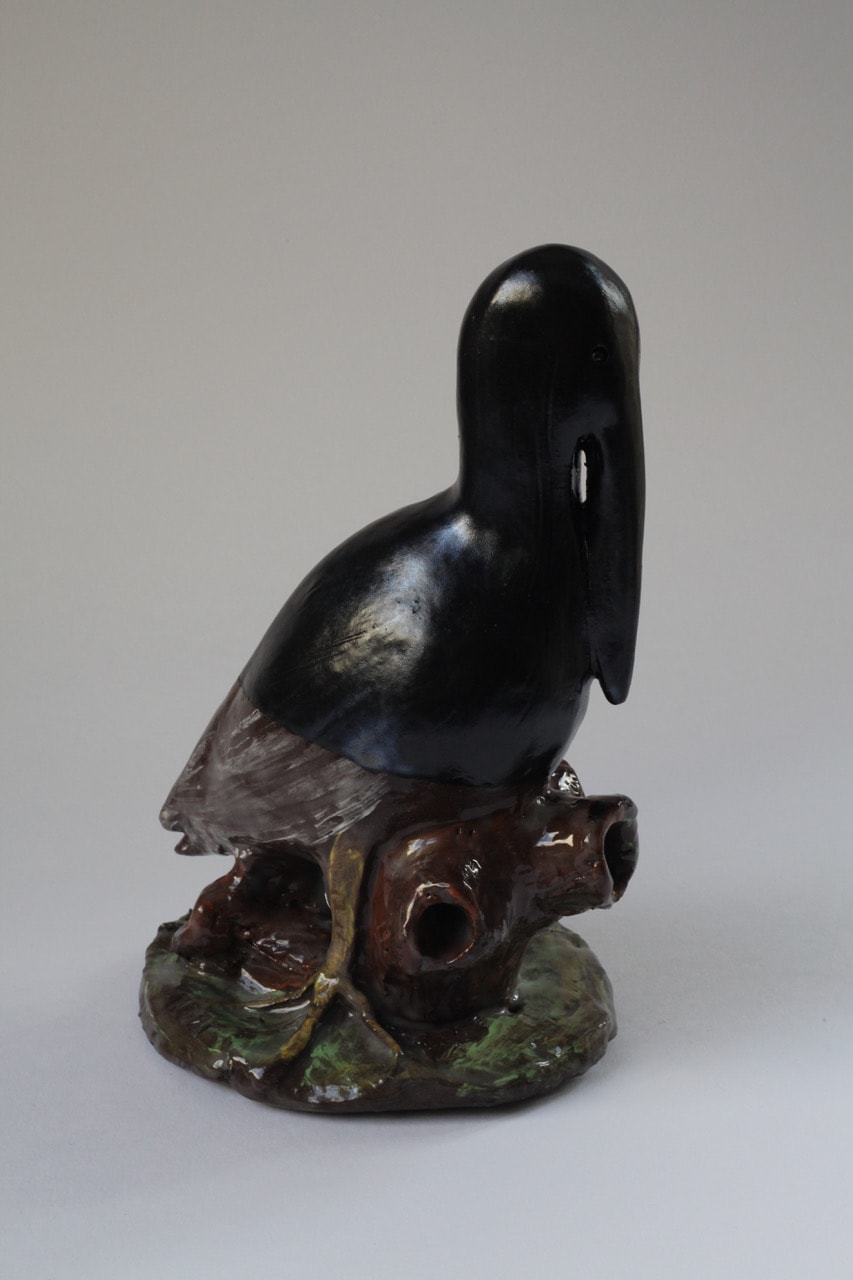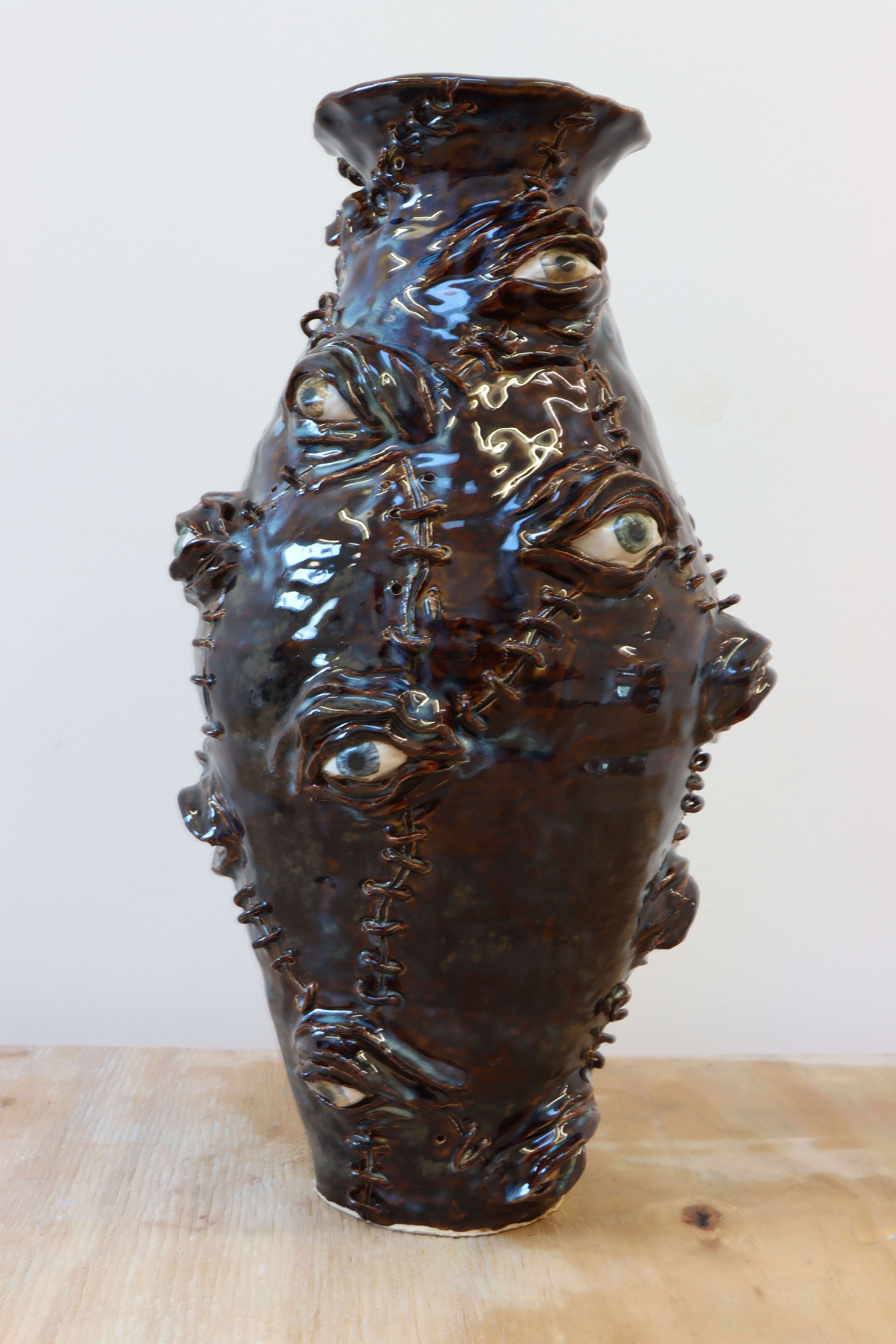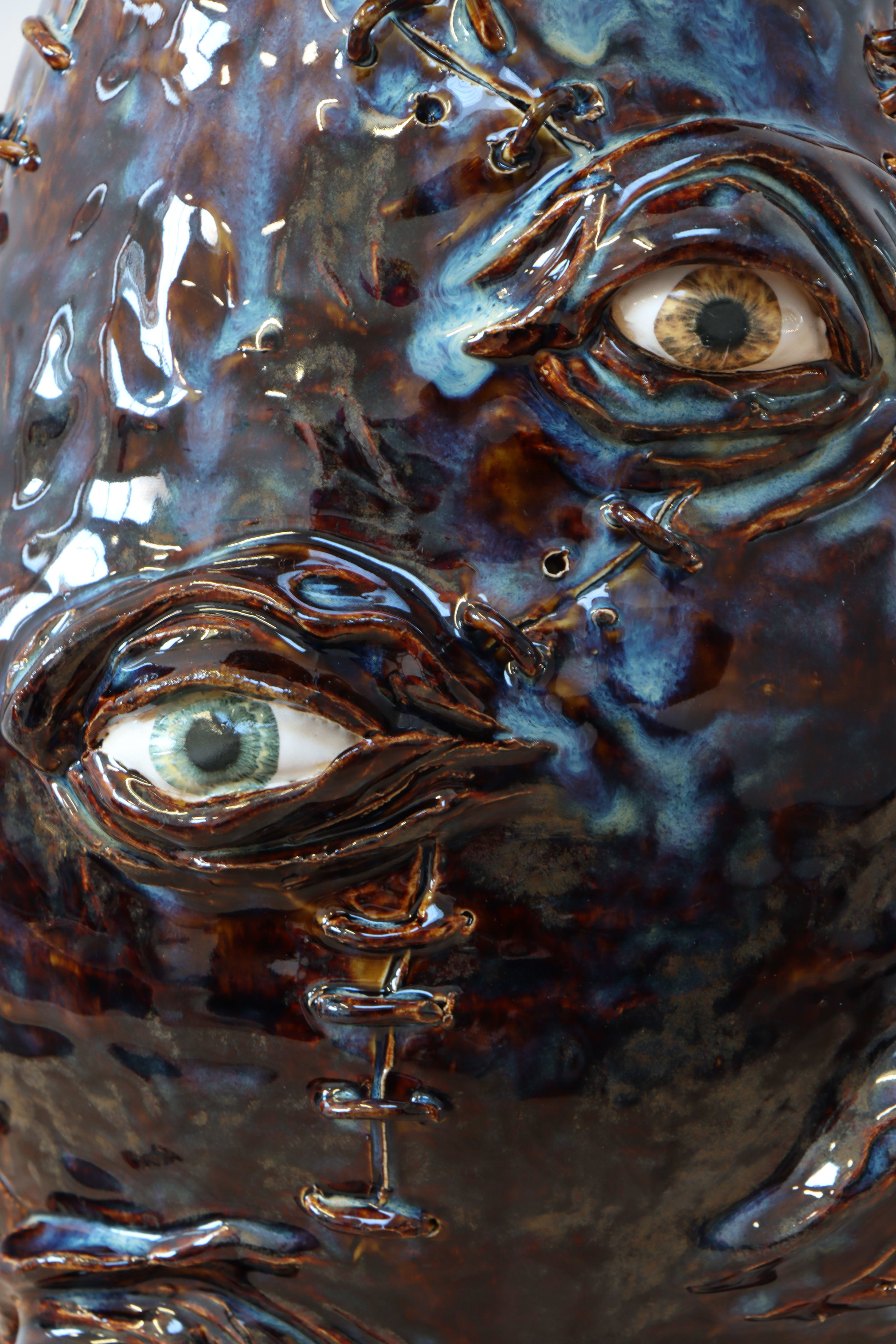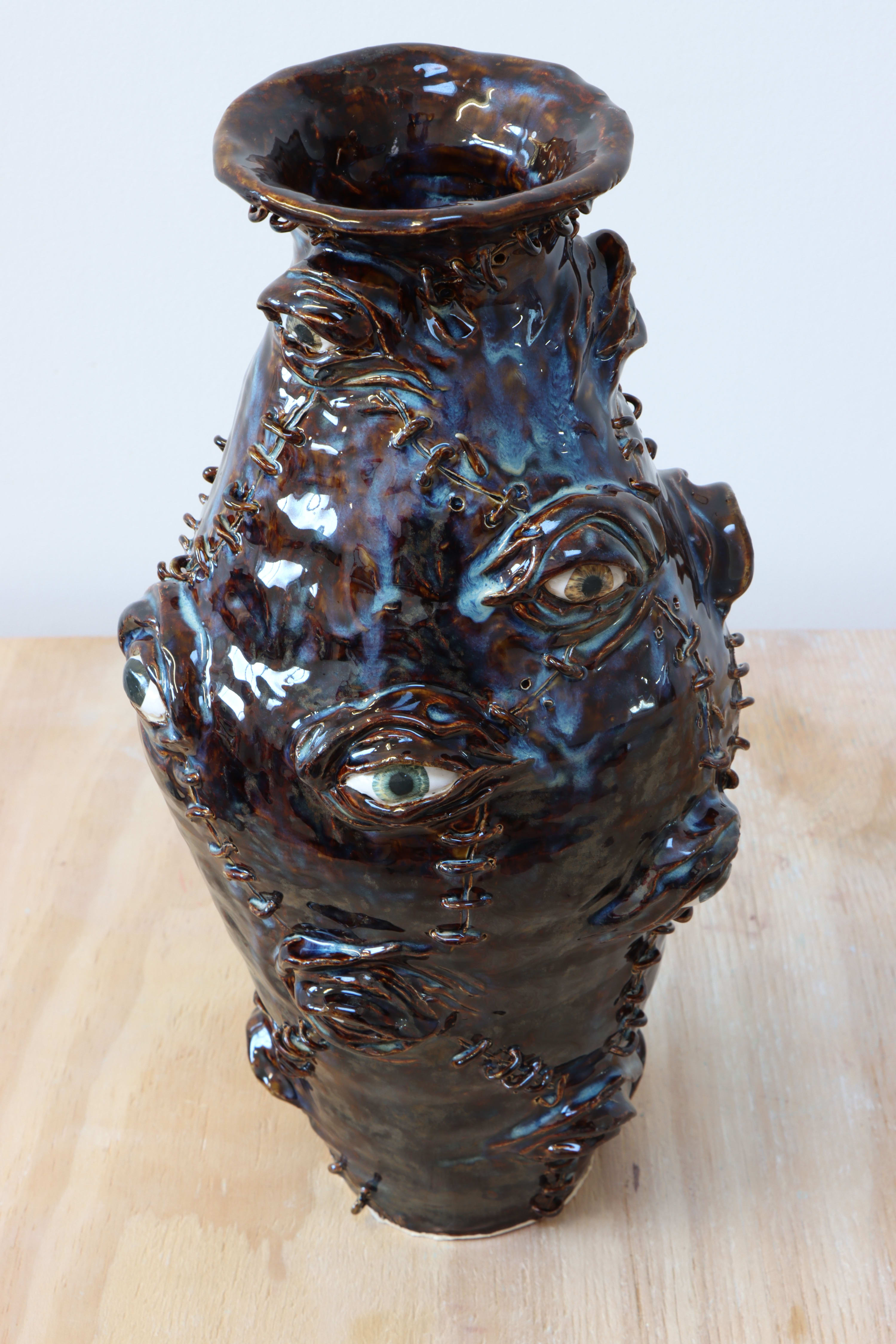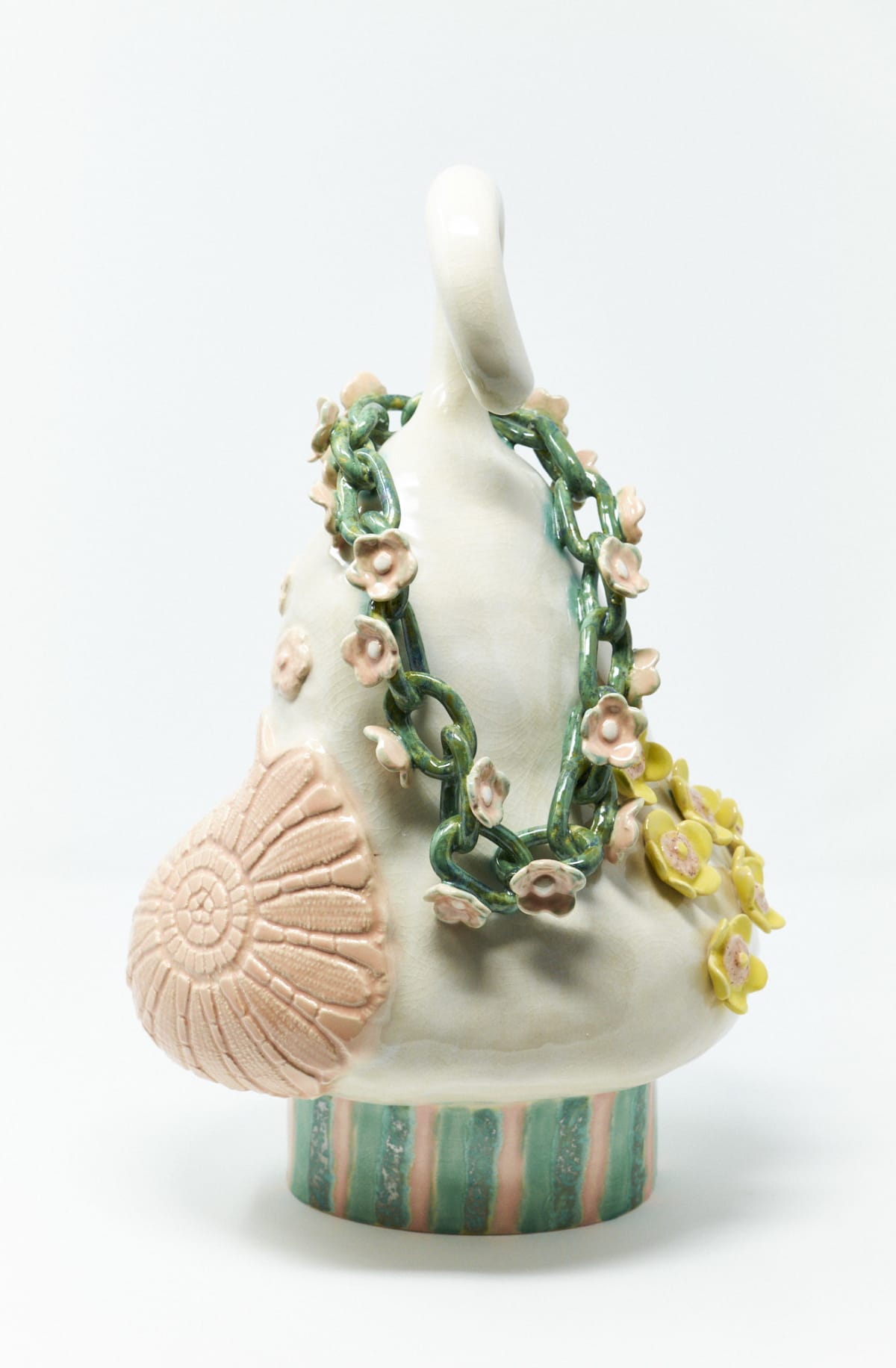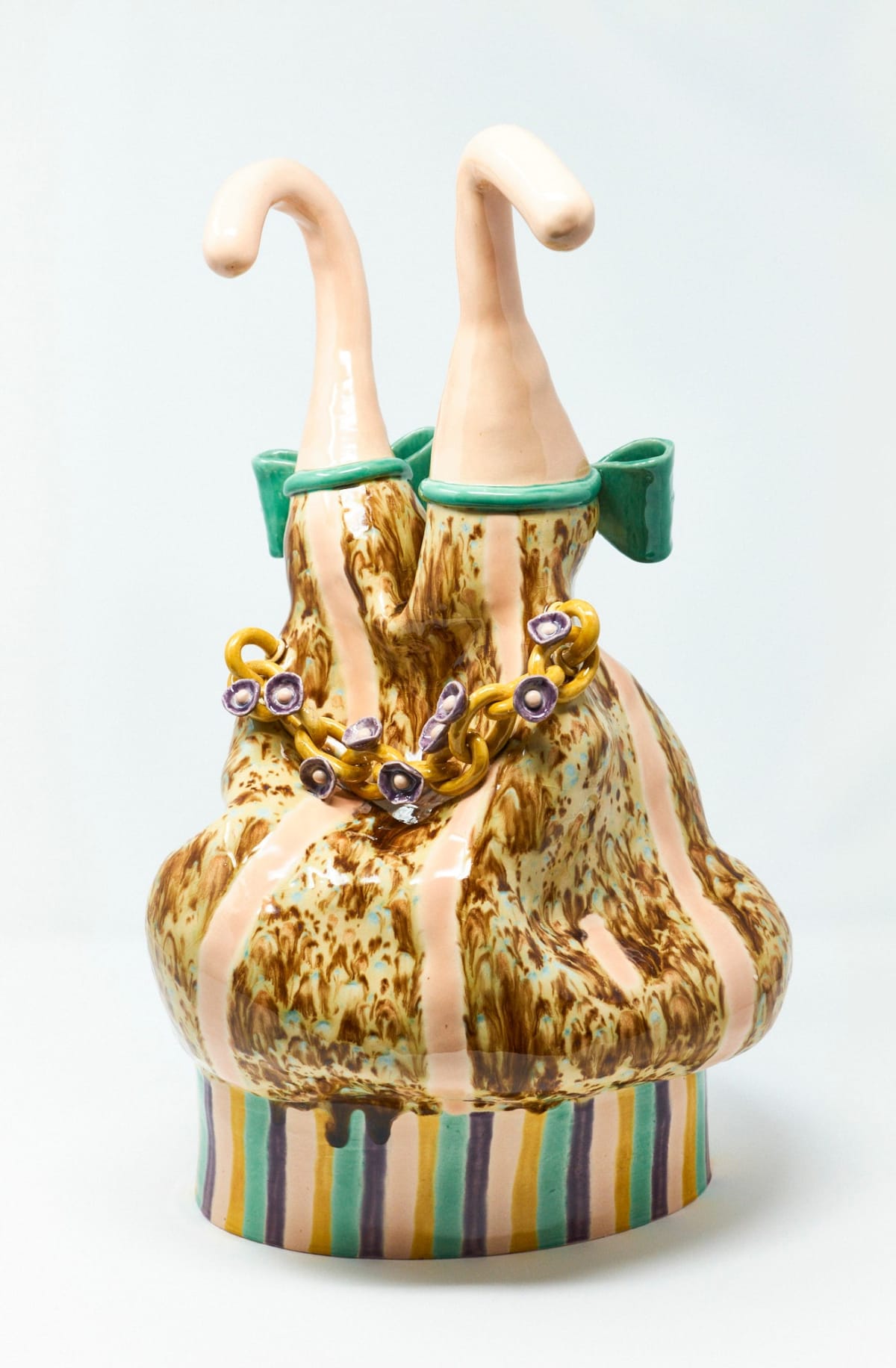-
-
‘Part II: Ceramics – The Central Core’ explores the fantastical, mythological and performative elements of the medium. The malleability of clay allows it to perform under and for an artist’s hands, a physical, mysterious manifestation of an artist’s psyche and ideas. The second half of our two-part online exhibition for Women 2.1, showcases work by female artists not represented by the gallery, featuring Shary BOYLE, Judy CHICAGO, Karen DENSHAM, Lindsey MENDICK, and Holly STEVENSON.
The ceramic process has always contained an air of mystery and other-worldliness – as Jo Dahn describes: “to take earth and turn it into something that can be used and admired is the most fundamental kind of alchemy.”
-

-
Shary BOYLE
Oasis, 2019Porcelain, underglaze, china paint, gold and silver lustre50 x 42 x 24 cm -
'What art isn't decorative? What function does fine art serve? I ask to provoke deeper consideration of the implied value system in the distinction. Let's question who gets to distinguish 'meaning' and qualify ideas. Or determine when an object is 'only' something pretty to look at, or for ‘service’. Let’s look closely at who decides the terms of good art and bad art, for whose benefit.'
- Shary BOYLE, WHY I CREATE
-

-
'Historically, women have either been excluded from the process of creating the definitions of what is considered art or allowed to participate only if we accept and work within existing mainstream designations. If women have no real role as women in the process of defining art, then we are essentially prevented from helping to shape cultural symbols.'
― Beyond the Flower: The Autobiography of a Feminist Artist -
Judy CHICAGO
Six Erotic Cookies (in 10 parts), 1967Sculpture: plastic bowl, glass and painted plaster
Two drawings: acrylic and ink on paper with wooden frameSculpture: 28.3 x 31.4 x 31.4 cm
Drawings: 35 x 35 cm each -

-
‘DENSHAM’S WORKS CANNOT BE REGARDED AS WHIMSICAL OR AS FLIGHTS OF FANCY. ON THE CONTRARY, THEY ARE ROOTED IN EVERYDAY LIFE, SOMETIMES IN ITS ACCIDENTLY COMICAL TAWDRINESS, SOMETIMES IN ITS TRAGICOMEDY OF HUMAN RELATIONS, AND SOMETIMES IN ITS ROUTINE HORRORS.’
- MATTHEW BOWMAN
-

-
Lindsey MENDICK
Bursting at the seams, 2021Glazed ceramic40 x 25 cm -
‘I quite often have this internalised fear of being exposed as a fraud when I think of how my work sits in relation to the history of ceramics. It’s definitely got worse as I have become more successful in my field and people’s expectation of the works have increased. I have become more unsure of myself, with intrusive and cruel thoughts creeping through the cracks in my ceramics and attacking my capability and successes. I think that due to the often critical and perfectionist nature of ceramics, this feeling can be magnified, as the work can receive criticality from both a craft and fine art background. There is this language to ceramics that even though I adore working in clay I just can’t permeate. I know a lot of artists who work in ceramics are interested in the craft and science of firings and glazings. But I’m not ashamed to say I’m not. I am happy with buying botz pots and throwing the glazes on without any idea of the outcome. I am not a ceramicist, I’m an artist.’
- Lindsey Mendick, On being honest and fragile, and her work - leaky and grotesque
-

-
'My practice is informed by psychoanalysis, feminism and fiction: I repetitively make and utilise two key forms in clay, the oval and the cylinder, which are inspired by Freud’s favourite seductive egg-shaped jadeite ashtray. This can still be found equipped with a phallic cigar on his desk at the eponymous museum in Hampstead: The resulting ceramic sculptures are often described as uncanny because of their ability to allow the viewer to recognise the object/subject but a formal lack of mimesis actively creates intrigue.'
- Holly Stevenson
Saltoun Online
